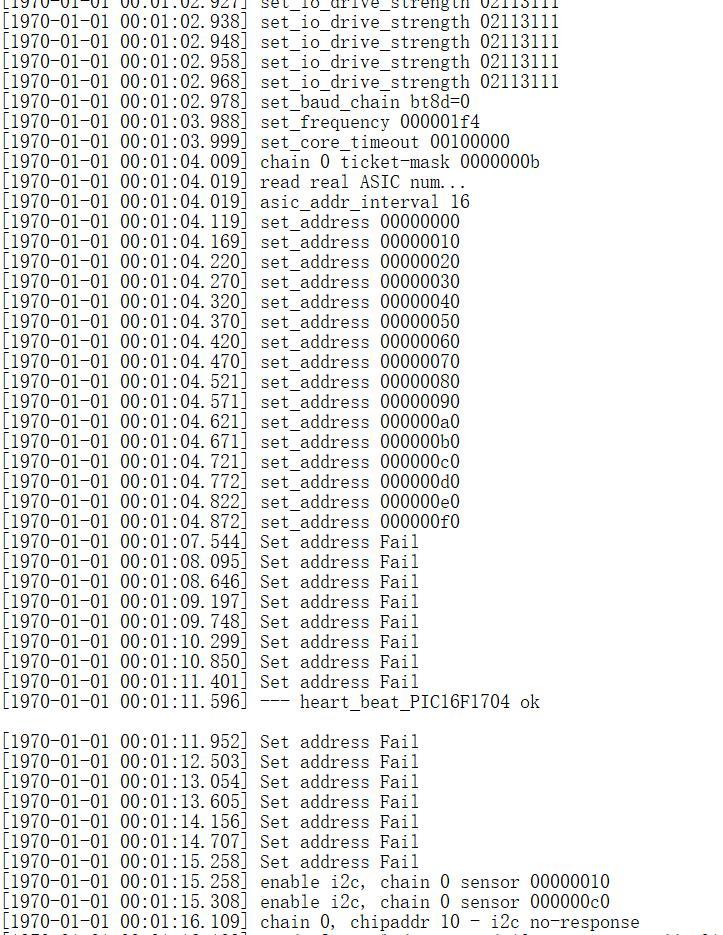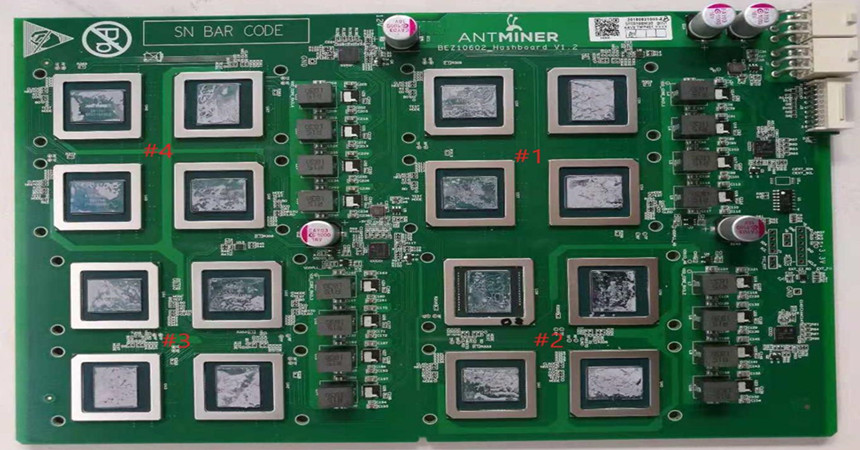


1. The single hash board test has no hash rate
Check the log. If you fail to set the address, you need to check the TVS, resistors, and capacitors around the connector J3 and whether there is a short or open circuit. Then check U2 and the surrounding resistors and capacitors for an open circuit or short circuit.

2. Single hash board test 4 or 8 chips display "X"
You can see the following situations in the Log: “Chain J0 has 8 ASIC” or Chain J0 has 12 ASIC. In this case, check whether the 0.8V output voltage is standard. Test point #3: VDD_CORE_RAIL4, test point VDD_CORE_RAIL3 for #4 group.

3. The whole Z9 miner cannot detect the hash board
First, exchange the data cable position to eliminate the control board and data cable problems. Then check the log to see if the PIC is normal. If it is normal, follow the instructions in items 1 and 2 to continue the investigation.
4. No power output
There are roughly two situations; one is the output short-circuit, that is, some BGA short-circuits. In this case, measure the voltage of the resistors R122, R98, R74, R50 to the ground, and the normal voltage is above 3.2V. If the output is short-circuited, The voltage here will be lower than 3V. The best way is to detect the fault state through the output voltage of the power chip. If it is short-circuited, it will display OCP. In the other case, the MOS is damaged. In this case, you can only locate and check the fault one by one and replace the MOS.
5. A single chip displays "X"
In this case, the'X' chip needs to be replaced.
6. Chip back to Nonce less
Repeated testing, if it reproduces stably, the faulty chip needs to be replaced.
